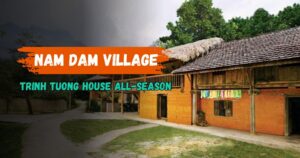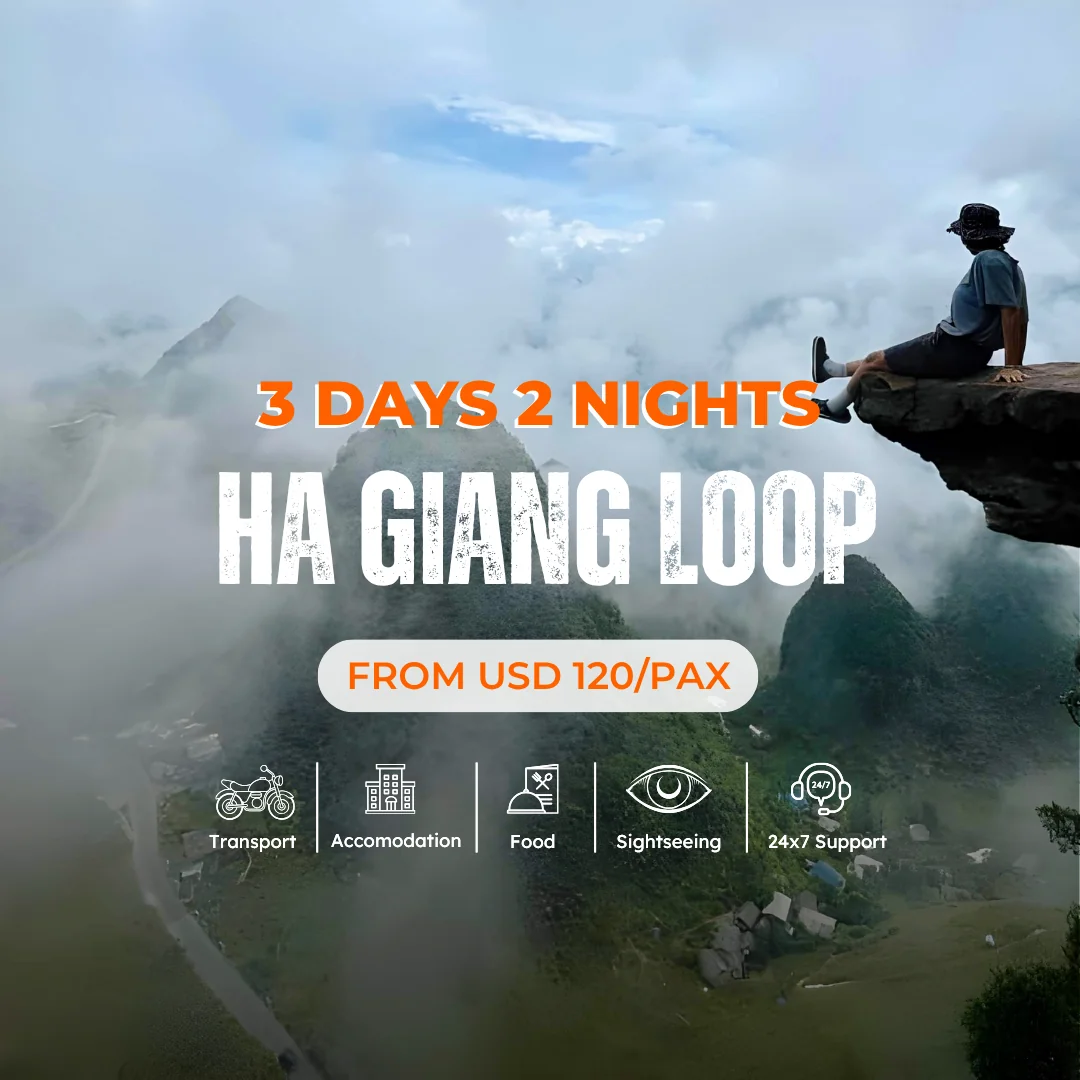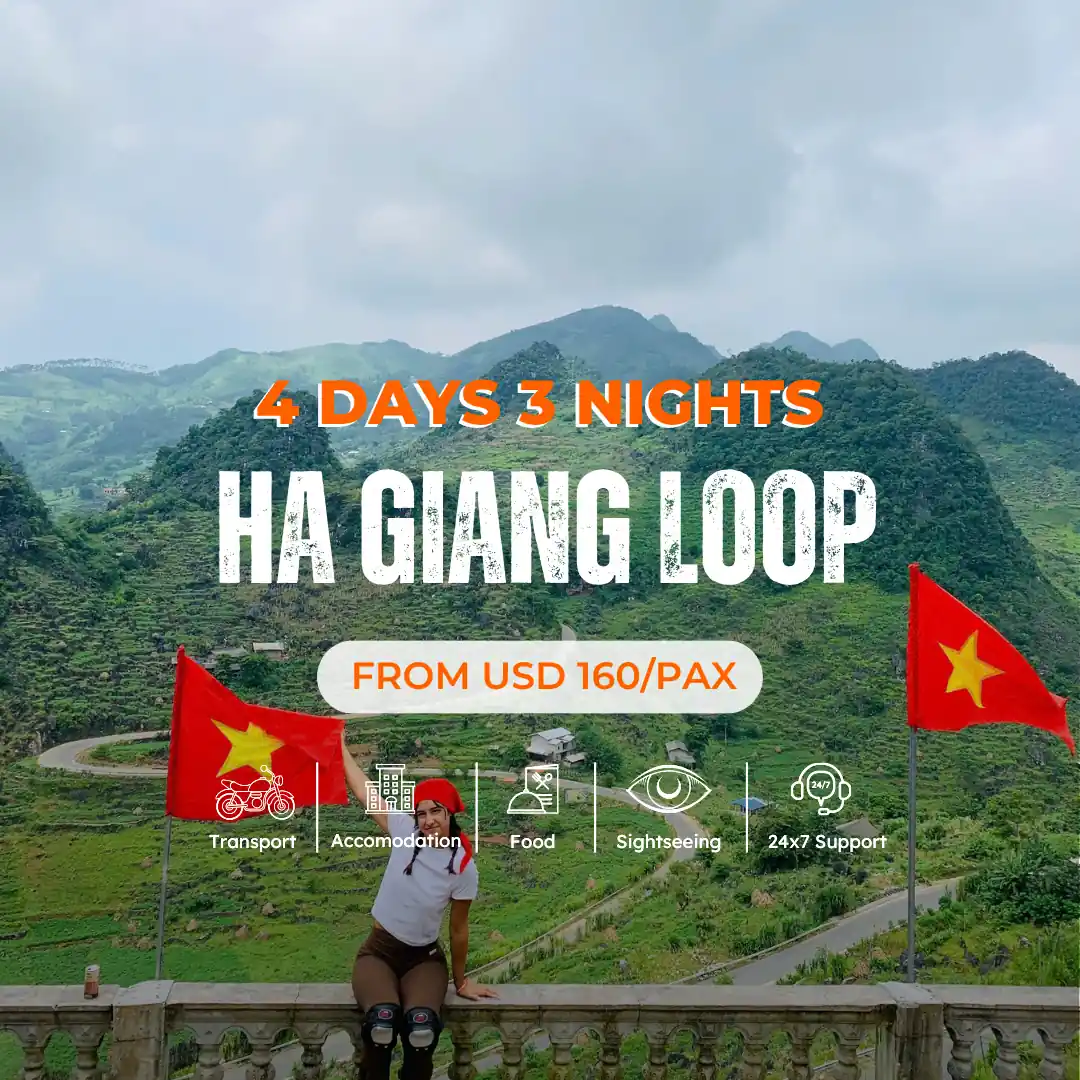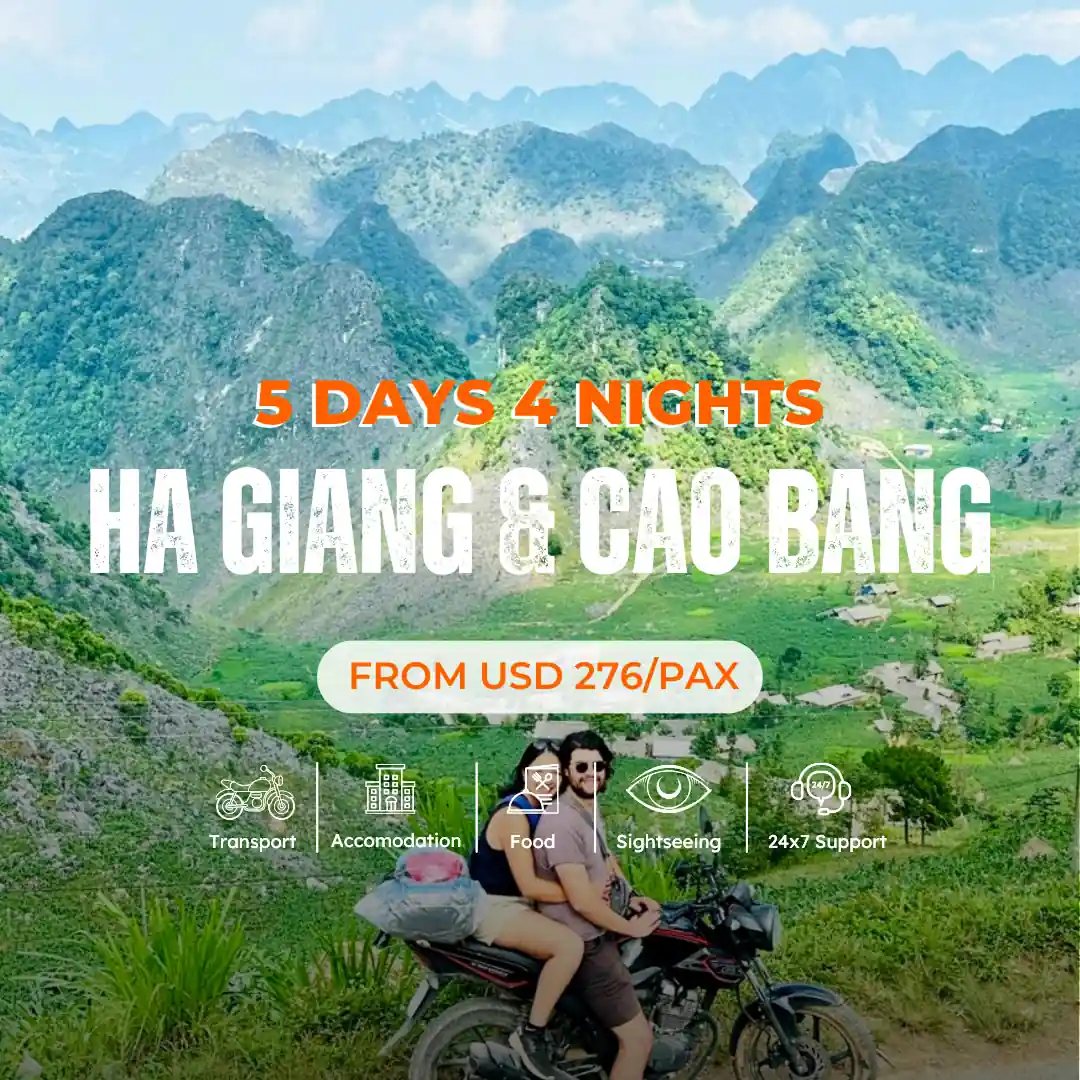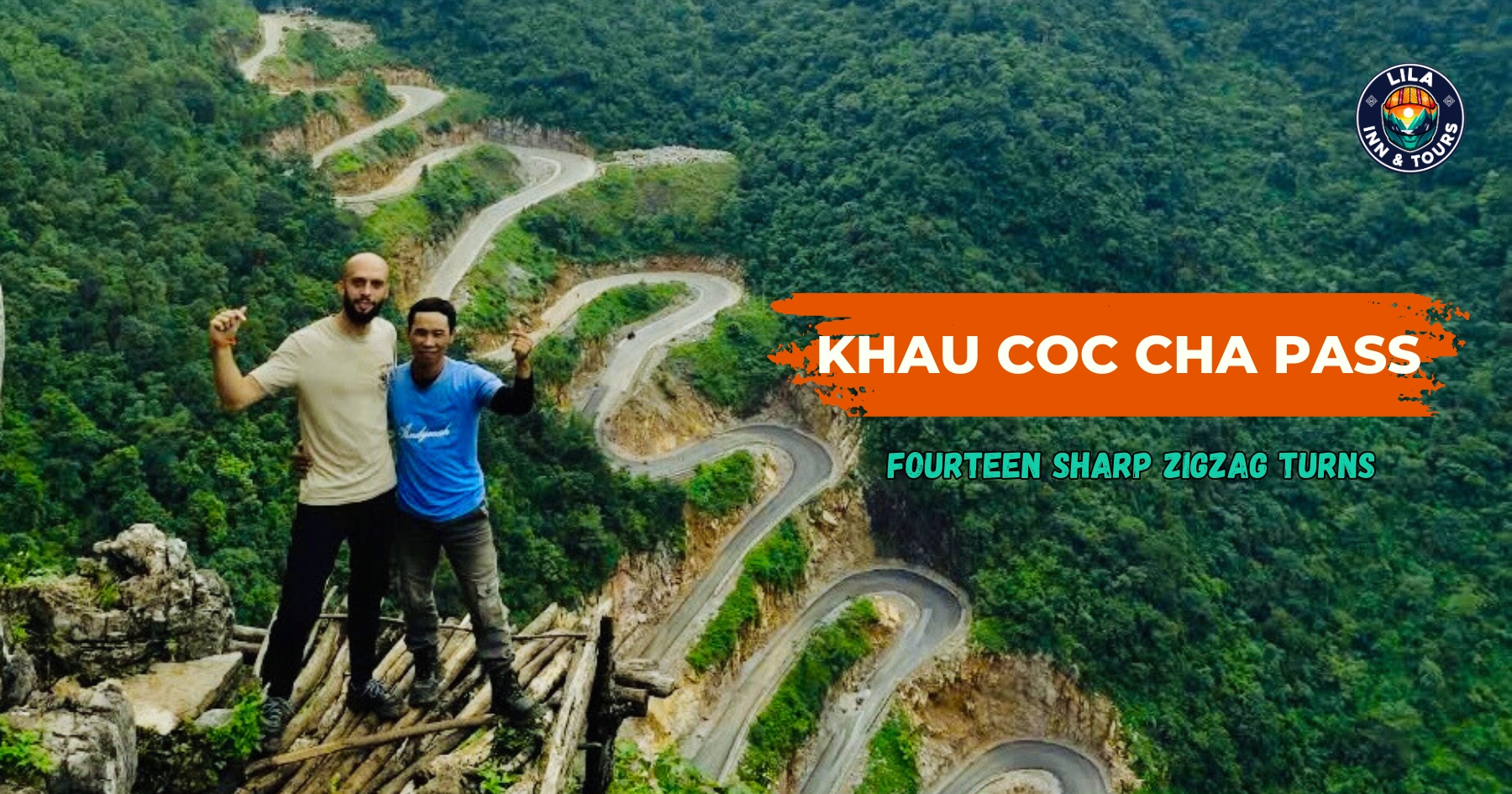The best times to visit the Ha Giang Loop are from September to April, when the weather is cool and there is little rain, making it easier to ride through the winding mountain passes.
As a local tour operator with 8 years of experience on the Ha Giang Loop, we can assure you that the Ha Giang Loop is beautiful in all seasons, despite the different weather conditions.
Spring brings peach and plum blossoms along with lively local festivals, and summer is the season of glistening “water pouring” terraces. Autumn shines with golden rice fields and purple buckwheat flowers, while winter feels magical with misty mornings and cold breezes.
In this guide, Lila Inn & Tours will walk you through the highlights of Ha Giang Loop weather so you can choose and prepare well before your trip.
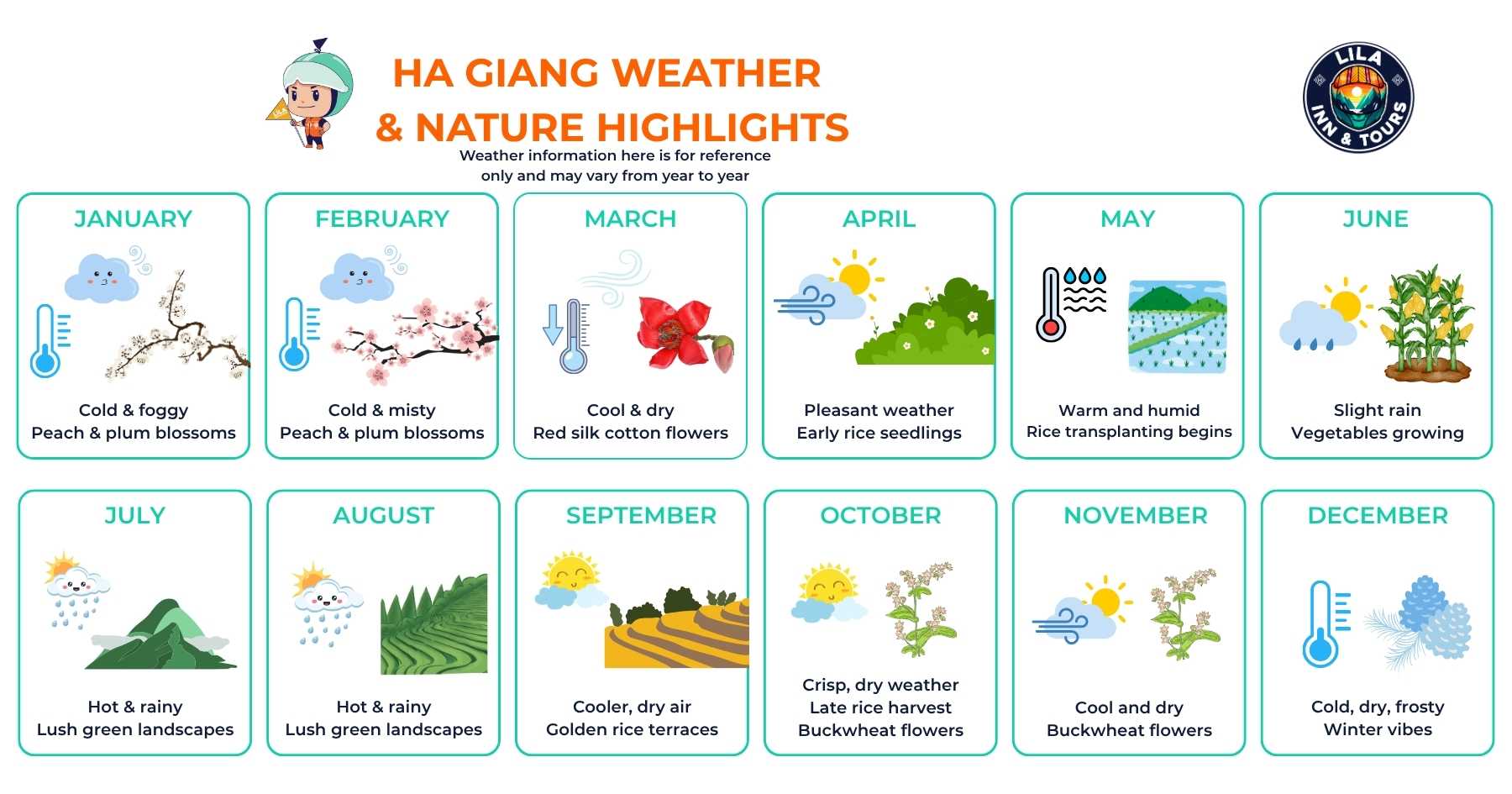
Best time of year to visit Ha Giang Loop
Based on our experience as a local tour agent, the best time to do the Ha Giang Loop is from September to April, which is considered the dry season in Ha Giang. Meanwhile, the rainy season lasts from July to August.
During these dry months, the weather is pleasant throughout the day, with average daytime temperatures ranging from 15°C to 25°C. The days are usually sunny and clear, while the evenings can be a bit chilly.

Also, Ha Giang offers its best scenery at this time.
If September and October come with the golden rice terraces glowing under the sun, November brings you the famous buckwheat flowers blooming in pink and purple.
Then, as March and April arrive, the highlands are gently covered with peach and plum blossoms, creating a dreamy and romantic atmosphere across the valleys.
It’s no surprise that during these months, we welcome over 1,500 travelers on the loop—the highest number of the year!
Ha Giang Loop weather (in 4 seasons)
Located in the northern highlands of Vietnam, the Ha Giang Loop goes through four very different seasons: spring, summer, autumn, and winter.
Each season has its own charm, from the weather and landscapes to the food and local activities. Understanding these changes will make it easier to plan your journey and enjoy the best of what each season has to offer.
Spring (February – April) | Good weather, new year, & flower blossoms
Average temperature: 15°C to 25°C
Climate Patterns: cool with little rainfall
Scenery: white and pink blossoms
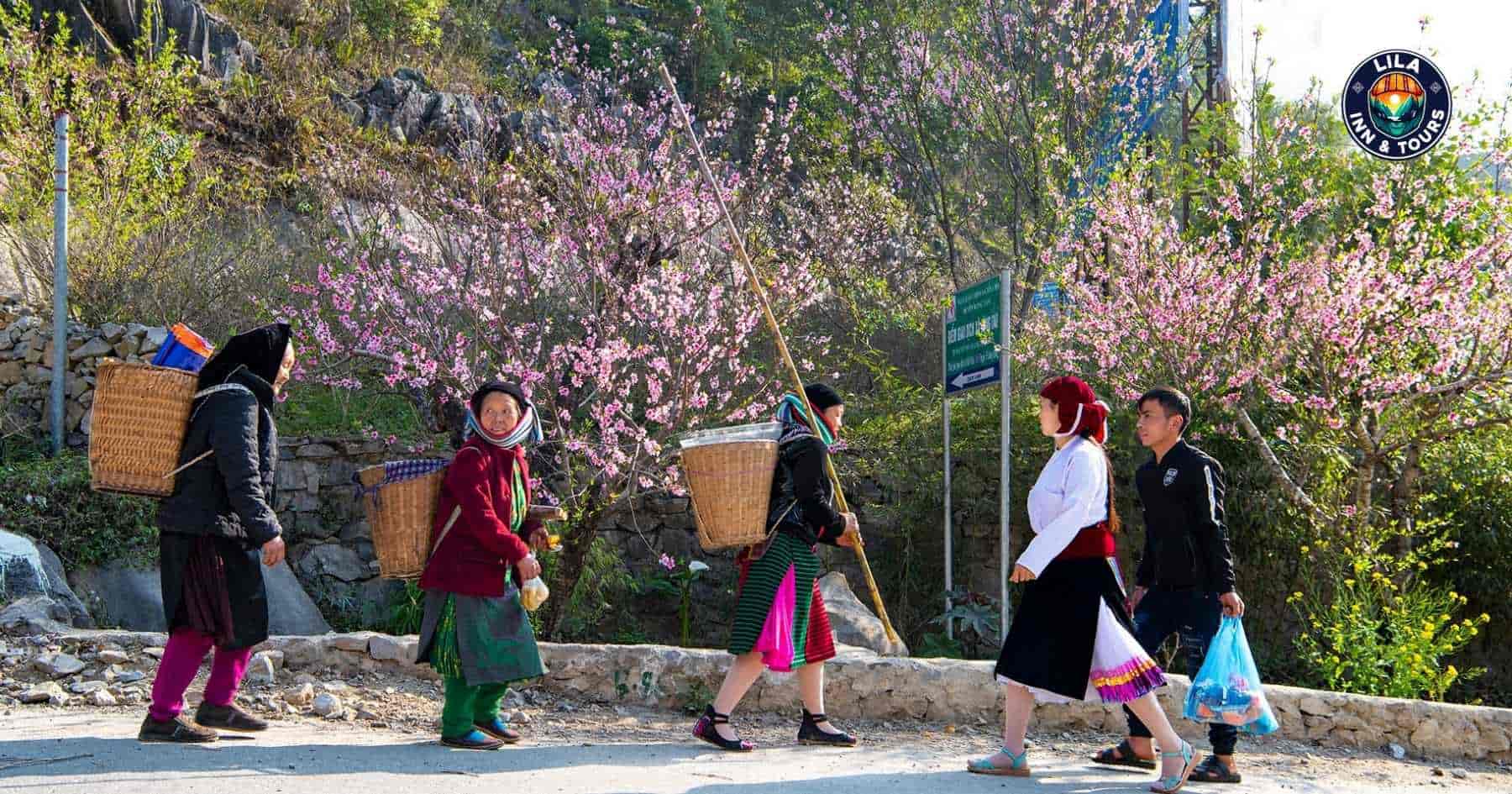
Spring in Ha Giang feels like a gentle welcome to all travelers. We believe that this is one of the best times to enjoy the Ha Giang Loop thanks to its pleasant weather. Days are usually bright and sunny, the air is fresh, and there’s less rain. The atmosphere is so inviting that you’ll want to take deeper breaths as you ride along the mountain roads.
Spring is also the season when Ha Giang’s nature awakens most beautifully. Hillsides and villages are covered with pink peach blossoms and white plum flowers, which makes the entire province look like a watercolor painting.
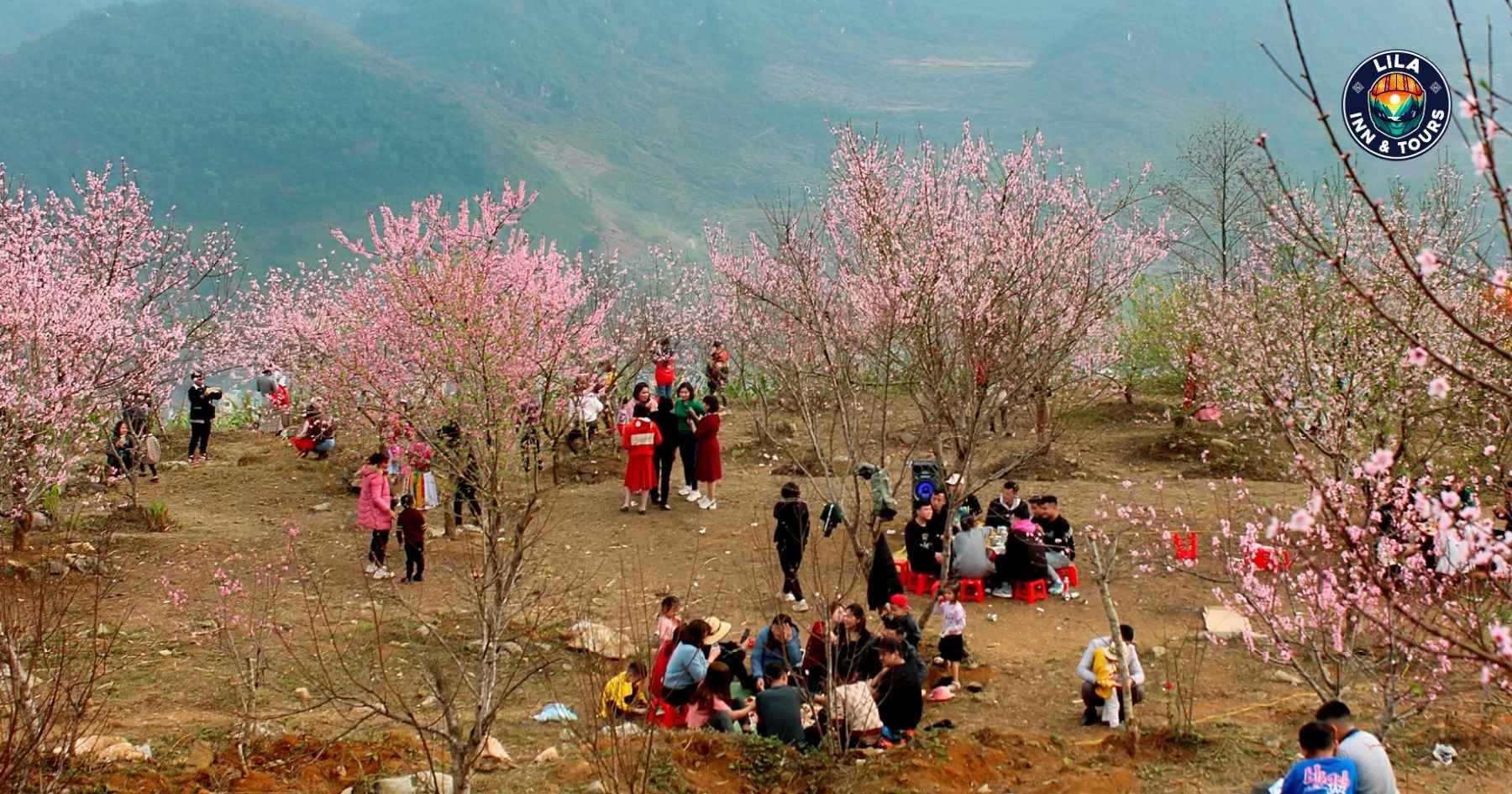
If you visit Ha Giang during Vietnam’s Lunar New Year (which usually falls in February), you’ll step into a joyful atmosphere with traditional games, colorful dances, and the warm smiles of ethnic groups.
A bit later, in April, the most famous Khau Vai Love Market takes place. This is a chance for people to gather, meet old friends, share stories, and enjoy a festival full of culture and love.
Although the weather in spring is mostly comfortable, it can get quite cold at night, and light rainfall may occur. Bring long-sleeve jackets to stay warm and carry a raincoat for the road.
Summer (May – August) | Lush green, waterfalls, rice terraces
Average temperature: 25°C to 32°C
Climate patterns: hot, heavy rain
Scenery: green mountains, rice terraces, waterfalls
Summer is considered the rainy season in Ha Giang, with the heaviest rainfall usually in July and August. The days become warmer, yet the heat is not too harsh thanks to the fresh mountain air. By evening, the weather turns pleasantly cool, offering a comfortable balance.
Apart from other seasons, summer brings a very different kind of charm, with mountains and valleys at their greenest.
As you may know, Ha Giang is home to many hidden-gem waterfalls, and summer is the best time to admire these beauties.
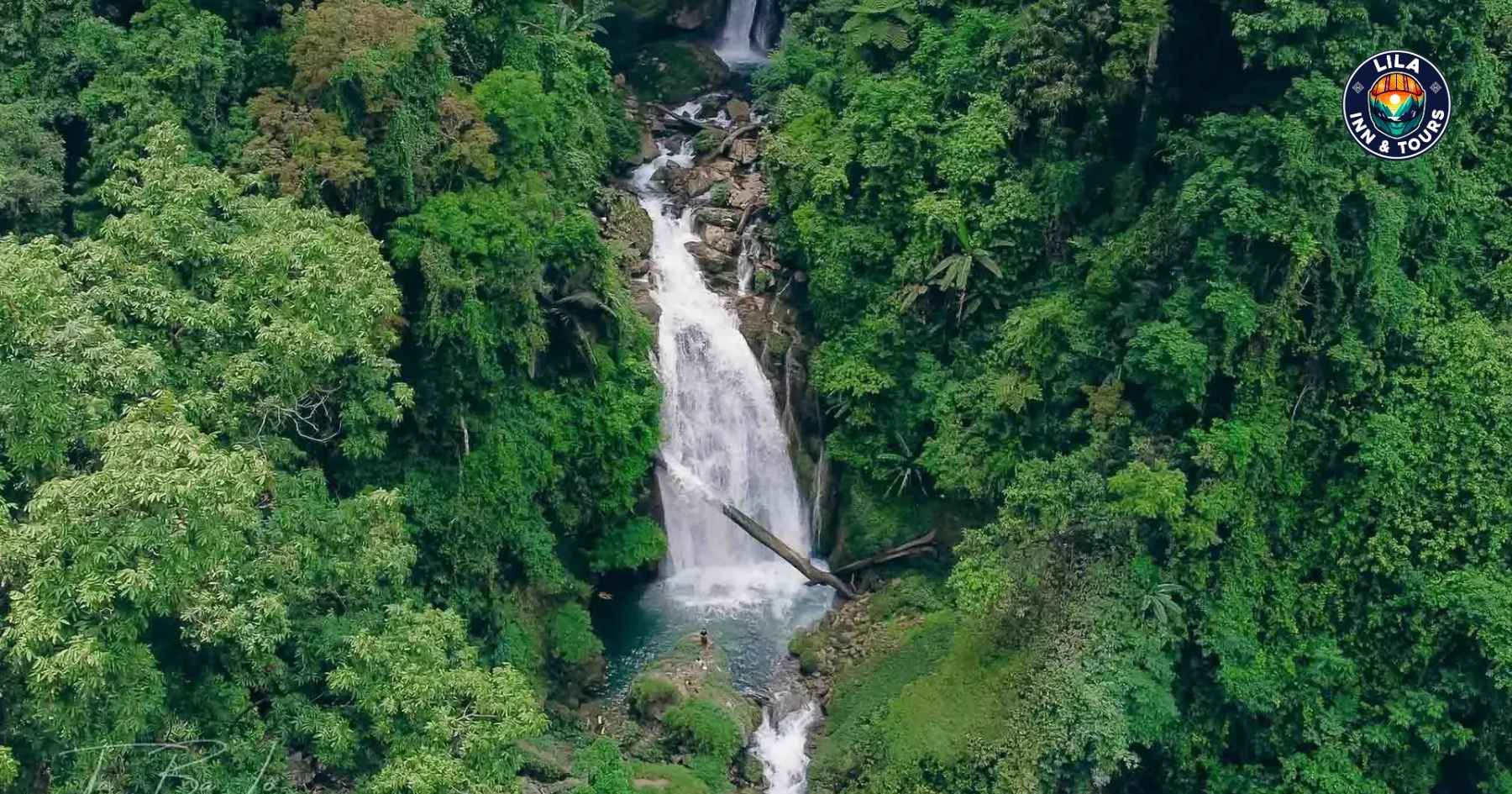
With abundant rain, streams surge and waterfalls crash down with full power, creating breathtaking scenes of majesty.
Another highlight of summer is the famous “pouring water season” on the rice fields. As local farmers prepare their land for a new crop, the terraces sparkle like mirrors under the summer sun.

For those who love outdoor adventure, summer is perfect for exploring caves, swimming in cool natural pools, and trekking through the mountains.
However, we still have some reminders for you when traveling this season.
In June and July, the weather may get very hot at noon, so you should start your journey early in the morning to avoid the midday heat. Don’t forget to bring sunscreen and plenty of water.
Summer is especially prone to sudden heavy rains, which can make roads slippery. For safety, it’s highly recommended to check the weather forecast in advance, ride with extra caution, and, if possible, travel with a local guide.
Autumn (September – November) | Golden harvest, buckwheat blossoms & clear sky
Average temperature: 18°C – 25°C
Climate patterns: cool, dry, low rainfall
Scenery: golden rice terraces, buckwheat flowers
Besides spring, autumn is also one of the best times to visit Ha Giang. The days are cool and pleasant, while the nights turn slightly chilly. The skies are clear with very little rain, making it perfect for riding along the winding mountain roads. Yet, what makes autumn truly special is not just the comfortable weather, it’s the breathtaking scenery that only appears during this season.
The rice harvest season marks the start of autumn. In September and October, the terraced fields turn golden, stretching endlessly along the mountain slopes and valleys. The view is so stunning that even a quick roadside stop can reward you with photos that look like paintings.
Along the way, you can also enjoy the special scent of ripe rice fields filling the air. It would be a memory you won’t forget about Vietnam’s rice terraces.
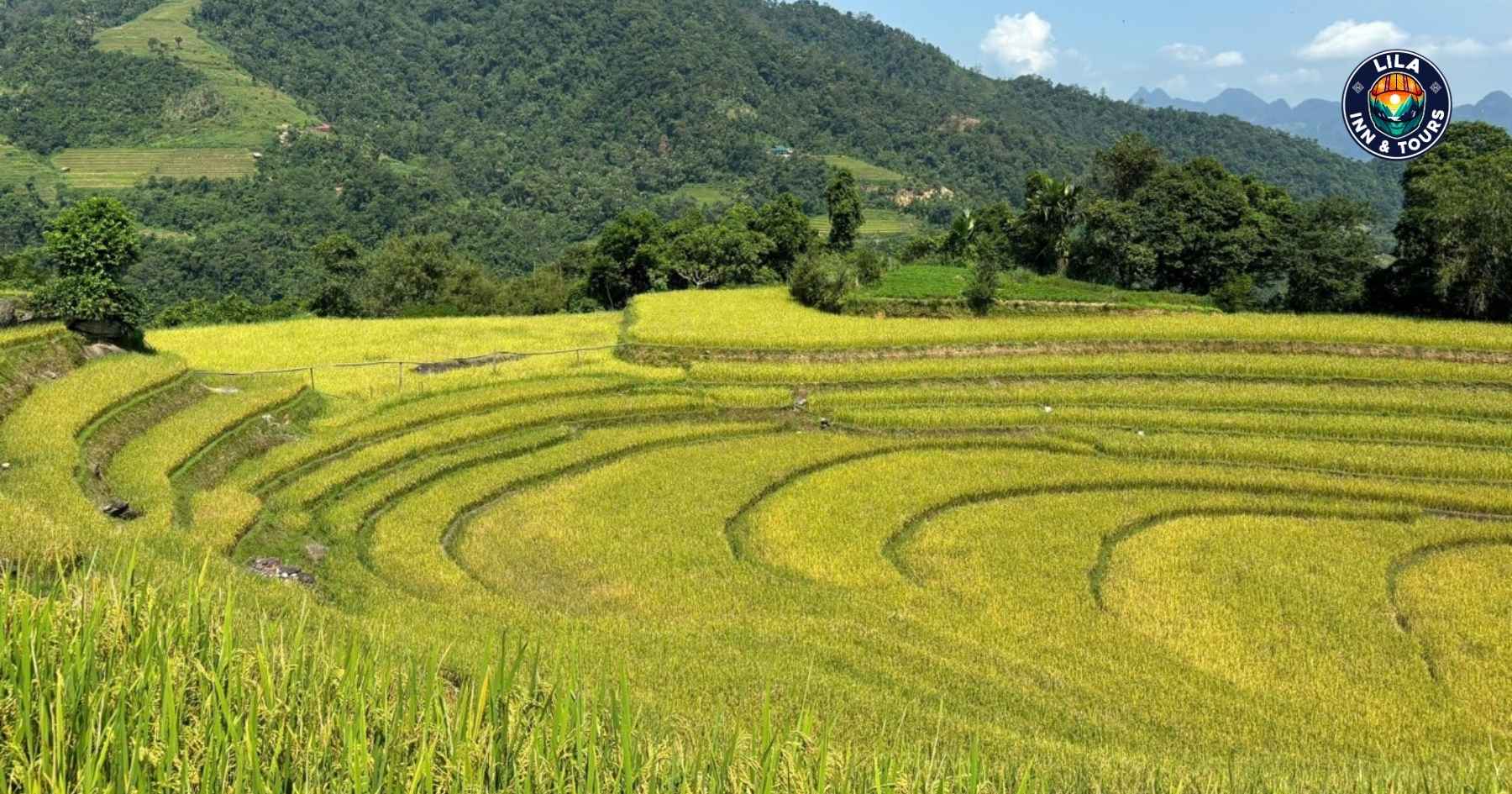
Then comes November, the famous buckwheat flowers begin to bloom. These tiny, delicate blossoms cover the hillsides and valleys in pink and purple, creating a dreamy landscape that “melts” the hearts of every visitor. Many people told us that they come to Ha Giang just to truly admire such a beautiful buckwheat scene and capture that once-in-a-lifetime moment.
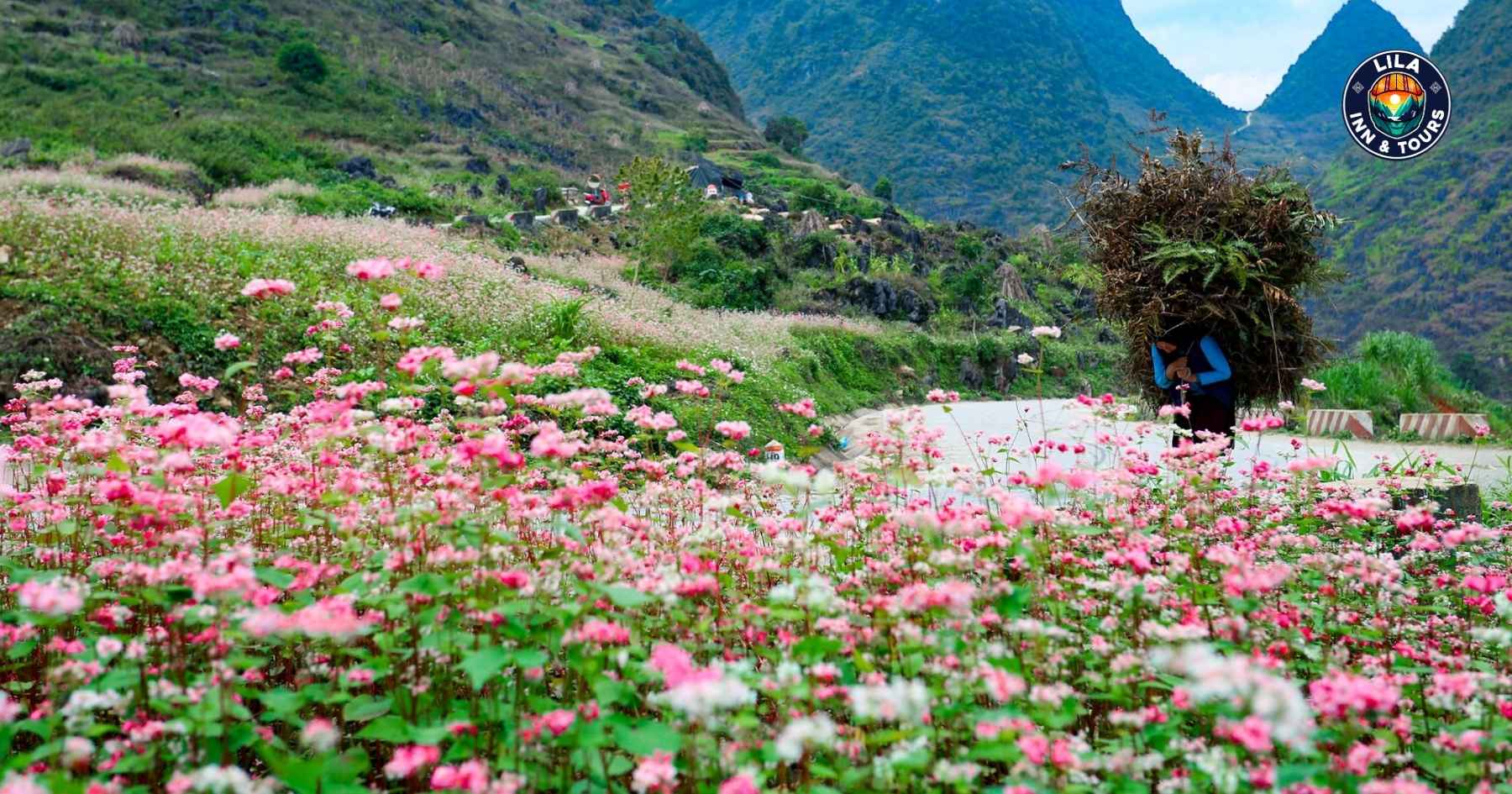
Autumn is also a great time for trekking or cloud hunting in Ha Giang. You could try waking up early to catch the sunrise and watch the ‘sea of clouds’ drift right before your eyes.
Winter (December – January) | Dry season, cold weather, rapeseed flower
Average temperature: 5°C – 20°C
Climate patterns: cool to cold, occasional frost, misty
Scenery: foggy mountains, canola flowers season
Winter in Ha Giang is quiet and peaceful. The days are cool, while the nights can get quite cold, sometimes dropping below 10°C. Morning mist often blankets the mountains and valleys, lending the landscape a mystical air. Frost may appear on the higher passes, adding a sense of magic to the highlands.
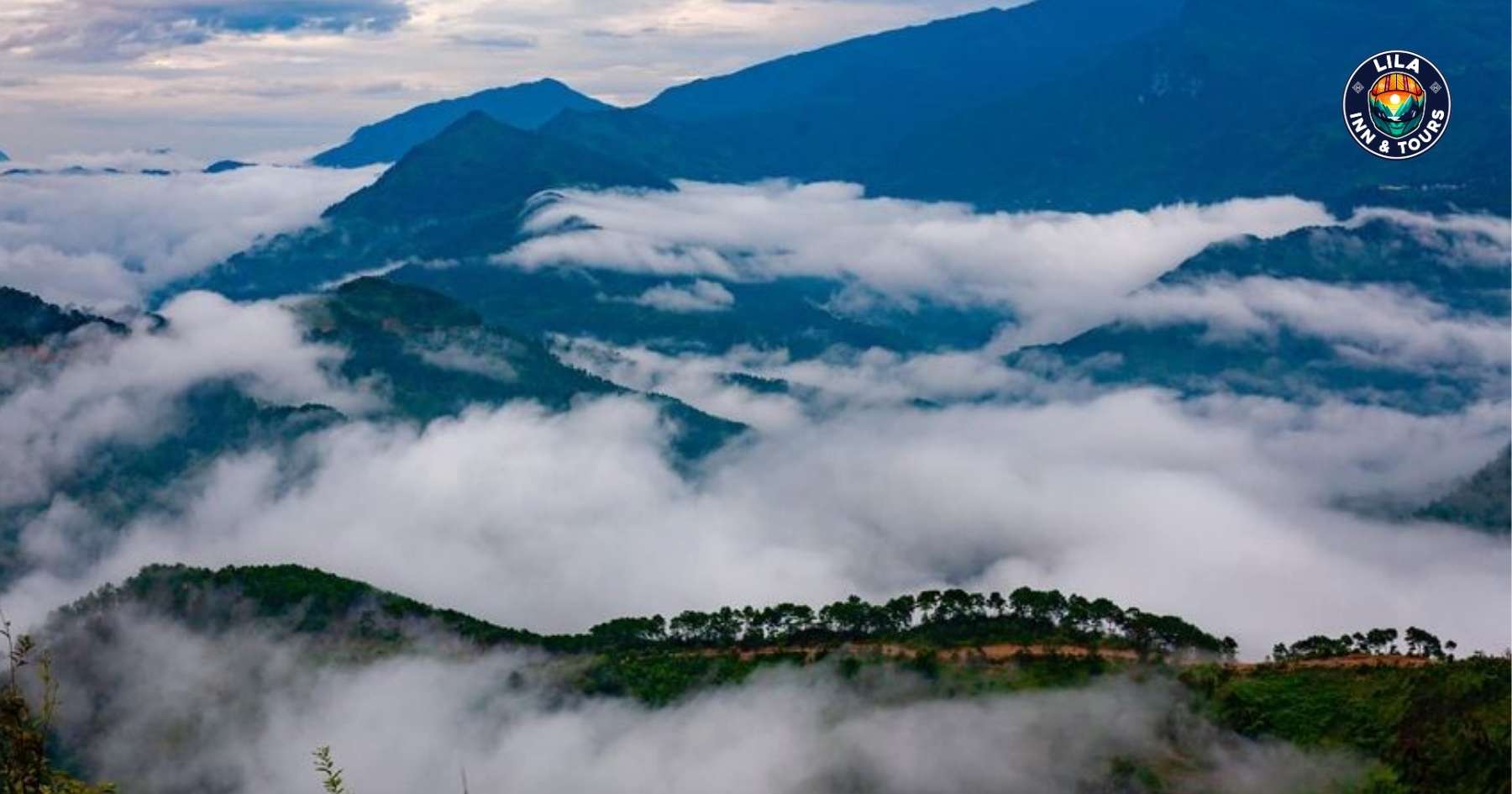
Despite the cold, winter has its unique charm. One of the highlights is the rapeseed flowers blooming across the fields and hillsides, painting the valleys in bright golden yellow. You may also catch the first signs of plum flower blossoms, hinting at the upcoming spring.
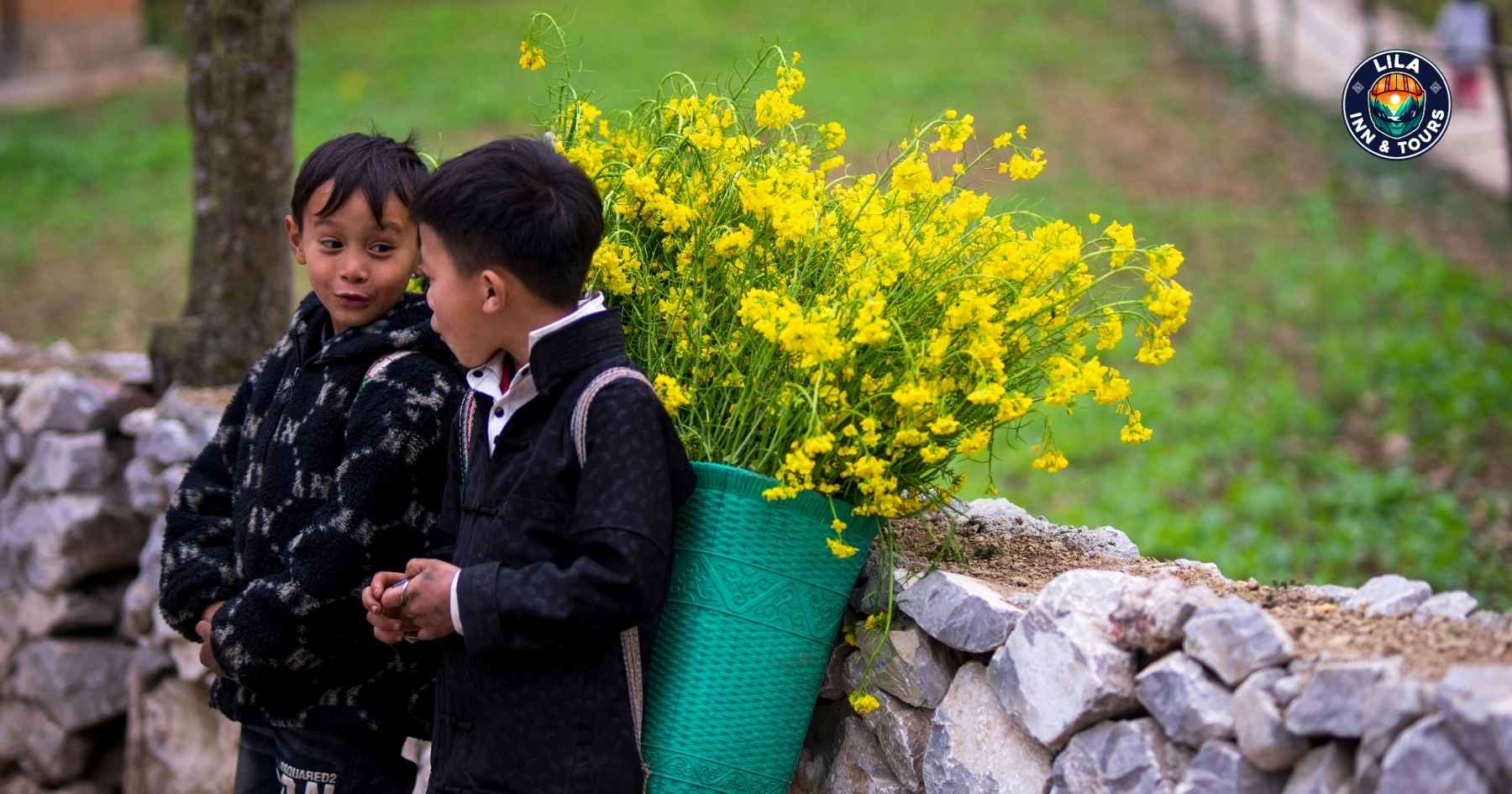
For many travelers, winter is ideal to enjoy the peaceful beauty of Ha Giang, wandering through local markets, and experiencing the tranquil rhythm of life in the highlands. However, remember to pack extra warm layers, as temperatures drop significantly at night. There are days when thick fog rolls in and limits visibility, which means you’ll need to ride more cautiously.
Tips for Exploring Ha Giang Loop (in the Rainy Season)
The weather is a key factor that can decide how enjoyable your Ha Giang Loop itinerary. That’s why Lila has gathered some useful tips, which are collected from both local knowledge and years of tour experience, to help you prepare at your best.
-
Packing smart: A well-prepared Ha Giang Loop packing list should include a good raincoat, waterproof shoes or boots, sunscreen, and a few warm layers.
-
Ride safely: Roads can get slippery during the rainy season, so keep your speed steady, maintain a safe distance, and avoid sudden braking to improve your overall Ha Giang Loop safety.
-
Go with a local guide: If you want to explore waterfalls or hidden trails, having a local guide makes a huge difference. Trails can be muddy and hard to find; a guide helps you stay safe and ensures you reach the right spots.
-
Check the weather: Keep an eye on the forecast, stay flexible, and be prepared for sudden showers along the way.
-
Dress in layers: Weather changes quickly with elevation. It may feel warm in the city but much colder in the mountains, so layers help you adjust easily.
-
Keep warm in the winter: Winter nights in Ha Giang can drop below 10°C—or even below freezing—so pack warm jackets, hats, and scarves to stay comfortable.
Avoid riding after sunset: Winter days in Ha Giang are short, and darkness falls quickly. Thick fog often covers the mountain roads, making riding much harder and more dangerous. Start your journey early so you can finish your route before nightfall, and always check your Ha Giang Loop map in advance so you know exactly where you’re heading before the light fades.
Discover Ha Giang Loop with Lila Inn & Tours
Understanding Ha Giang’s weather is key to a smooth trip, and having a local guide makes everything easier. That’s why Lila Inn & Tours is here to support you.
With over 8 years of experience and more than 24,000 travelers guided, we’re proud to offer the best Ha Giang Loop tour. At Lila, our journey is built around three core values: safety, personalized experiences, and off-the-beaten-path adventures.
-
Safety: Our trained Easy Riders follow strict rules and are prepared for sudden weather changes.
-
Personalized experiences: Small groups of under 10 travelers ensure attentive service and deeper connections.
-
Off-the-beaten-path adventures: We guide you beyond the tourist trails to discover both iconic landmarks and hidden gems.
Therefore, Lila also offers three popular routes for different travel styles. Our Ha Giang 3 day tour is perfect for a short, highlight-filled adventure. The 4 day Ha Giang Loop tour offers a smoother pace with more cultural experiences. And for travelers who want a bigger journey beyond Ha Giang, the Ha Giang Loop 5 days route includes an extended adventure through Cao Bằng—where you can explore majestic landscapes, quieter mountain passes, and iconic sites like Ban Gioc Waterfall.
Conclusion
By now, you’ve probably realized that each season in Ha Giang has its own unique charm to explore. That means the “best time” to visit really depends on what you enjoy most—whether it’s blooming flowers, golden rice terraces, or misty winter mornings.
No matter when you choose to go, Lila Inn & Tour offers Ha Giang Loop tour that help you plan a smooth, worry-free journey and make the most of your adventure.
Get your Free Ha Giang Loop Guide Plan your dream trip with our Free guide, including suggested itineraries, top attractions, safety tips, and local insights from Lila Inn & Tours By subscribing you agree to receive marketing communications from us. To opt out, click unsubscribe at the bottom of our emails.
FAQs
- When is the best time to visit Ha Giang Loop?
For most travelers, the best time is from September to April, when the weather is mostly dry and pleasant.
- What happens if it rains before/during the tour?
At Lila, we operate our tours rain or shine. However, if it is raining heavily before the start of your tour, we will delay it for 30 minutes to 1 hour until conditions improve.
If we determine that the road conditions are safe, we will continue the tour as planned. We provide free raincoats for all our guests.
If heavy rain starts during the tour and we must cancel, you will only be charged for the services and time you spent on the tour.
- Is it safe to ride motorbikes in Ha Giang if the weather’s predicted to rain?
Riding is possible, but extra caution is needed. However, the weather can vary by area, and clouds move, so you’ll still be able to enjoy the scenery in some places, while others may be obscured. Also, it’s recommended to ride with an experienced guide.







